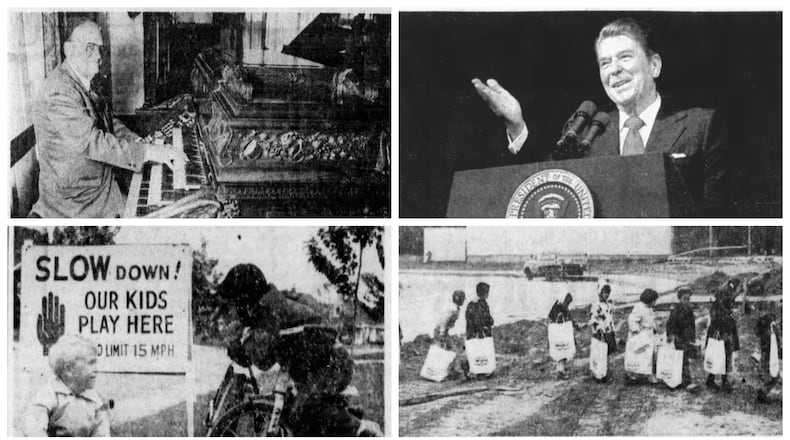Here’s a look at some stories from the week of Oct. 6-12.
Oct. 9, 1944: NCR women commended for rolling Red Cross bandages
Women employees of the National Cash Register Co., wives of NCR employees and others received congratulations at a company dinner in 1944.
The women had folded more than 50,000 Red Cross bandages over the previous five months. The project was originated and sponsored by the NCR Employees Independent Union.
In many instances, the women worked at the task for three or four hours after a nine-hour work shift.
Col. E.A. Deeds, representing the company, welcomed more than 500 Red Cross workers to the dinner, held at the NCR plant dining room, and expressed his appreciation for the effort.
Oct. 10, 1954: Developer of Eastview urges plan for recreation area
In 1954, Eastview was considered a ‘giant development’ in the vicinity of Wright Field. It had been in existence for just three years.
A conversation piece among residents, which consisted of roughly 592 families with 1,480 children, was the need for a recreation area.
Builder W.A. Simms came up with a plan in which residents would become “stockholders” in a seven-acre area already set aside for recreation. He described it as “a community country club.”
Cost of the recreation area, including swimming pool and a community house, was about $125,000. To become a stockholder, Simms estimated dues would amount to about $12 a year, and it would take at least 400 member families to get started.
Residents would supervise and maintain the operation, much like a modern day Home Owner Association (HOA).
Oct. 11, 1964: Normandy Elementary school ready for students
Some 400 Washington Twp. kids finally were able to move into their new school after a month of construction delays.
Students at Normandy Elementary had been spread around the district during the construction.
Sixteen of the building’s 26 classrooms were ready. The multipurpose room and kitchen were scheduled to be completed next. In the meantime, lunches had to be hauled in from the junior high school cafeteria.
The 10 unfinished classrooms were not to be completed until the following year, when school district elementary enrollment was expected to climb by another 250 to 400 students.
The building, located on a 15-acre site, cost $473,794 to build.
Oct. 6, 1974: Kline plays Deeds’ organ for first time since 1940s
The music room of the Moraine Farm home of the late Col. E.A. Deeds and his wife, Edith Walton Deeds, was the scene of a unique musical happening in 1974.
The Dayton Philharmonic Women’s association was visiting the home to have their new members’ tea.
The music room in the Deeds house had an ornate ceiling with relief figures of some of the world’s great composers. The room also had art objects from many parts of the world.
The three-manual Aeolian pipe organ at the homestead had recently been repaired. It hadn’t been played publicly since the death of Edith Walton Deeds in the 1940s. She was an enthusiastic organist, and the music room also housed a Steinway concert grand piano.
Montgomery County Commissioner Robert Kline was there to demonstrate the organ with its elaborately carved and decorated console. Kline for years played organ concerts at the National Cash Register Co. auditorium.
Oct. 12, 1984: Ronald Reagan-mania grips Daytonians
President Ronald Reagan spoke before an overflow crowd at Courthouse Square in Dayton, part of his five-city train tour through western Ohio.
Reagan hammered away at his opponent, Walter Mondale, especially on taxes.
“His increases wouldn’t be just a hardship — they’d be like a second mortgage,” Reagan told the cheering crowd. “But the Mondale mortgage is a mortgage on your future to pay for his campaign promises.”
Reagan singled out Dayton’s urban enterprise zone program during his 15-minute speech, saying the state would be helped by a similar federal program to help open shops and companies in those zones.
Before leaving Dayton by train at Union Station, Reagan made a surprise phone call from his car and told the audience there they could listen in. The call was to the astronauts aboard the space shuttle Challenger.
He said to the crew that he was in Dayton and they should “have a safe journey home tomorrow, and God bless you all.”
About the Author







